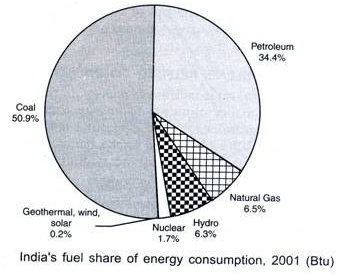urban problems related to energy
Urban center use enormous quantities of energy. In the past, urban housing required relatively smaller amounts of energy than we use at present. Traditional housing in India required very little temperature adjustments as the material used, such as wood and bricks, handled temperature changes better than the current concrete, glass and steel of ultra-modern building.
Cities are the main centres of economic growth, trade, education, innovations and employment. Until recently a big majority of human population lived in rural areas and their economic activities cantered on agriculture, cattle, rearing, fishing, hunting or some cottage industry.
It was some two hundred years ago with the dawn of industrial era the cities showed rapid development. Now about 50% of the world population lives in urban areas and- there is increasing movement of rural folk to cities in search of employment.
The urban growth is so fast that it is becoming difficult to accommodate all the industrial, commercial and residential facilities within a limited municipal boundary. As a result there is spreading of the cities into the sub-urban or rural areas too, this phenomenon is known as “urban sprawl”.
In developing countries too urban growth is very fast and in most of the cases it is uncontrollable and unplanned growth. In contrast to the rural set up, the urban set up is densely populated, consumes a lot of energy and materials and generates a lot of waste.
Energy use is closely related to development in industry, transport, communication, commercial, household and agricultural activities. The energy requirement of urban population is much higher than that of rural ones. This is because urban people have a higher standard of life and their lifestyle demands more energy inputs in every sphere of life.
In urban areas the need of energy is increasing by leaps and bounds. Moreover, countries use energy in an uneven manner in the world. In developed countries the amount of energy used is much more compared to developing countries.
Industrialised developed countries use energy for these purposes:
(i) Residential and commercial
(ii) Industrial
(iii) Transportation.
The two sources of energy are renewable and non-renewable energy sources. Optimal usage shall be the ideal mode for energy conservation. For an integrated management system we should have renewable energy as well as non-renewable energy sources.
At local level, biomass energy tapping, use of solar cooker, solar water heaters and solar photovoltaic cells must be encouraged. This shall be utilised besides the conventional energy from fossil fuels, hydel, thermal and nuclear power resources.
Due to high population density and high energy demanding activities, the urban problems related to energy are much more magnified as compared to rural population.
There are several hurdles that play havoc in energy conservation. They are:
(i) Lack of awareness
(ii) Attitude
(iii) Lack of technical knowledge
(iv) Market distortion
(v) Capital shortages.
Regardless of the level of economic development, it is essential to realize sustainable growth of the economies in order to maintain a world order, and restrictions on energy supply which may hinder a sustainable economic development should be avoided at all costs. At the same time, however, inefficient final energy consumption which may result in aggravation of the global environmental problems should not be allowed.


